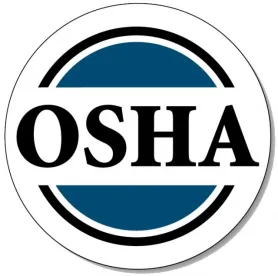The Occupational Safety and Health Administration (OSHA) has published a new National Emphasis Program (NEP) focusing on SARS-CoV-2 (COVID-19). The NEP is effective immediately and will remain in effect until March 12, 2022, 12 months from its issuance date.
NEPs are a way for OSHA to focus agency resources and target specific high hazard industries or specific hazards common in certain workplaces, and they are considered to be a neutral administrative program that allows OSHA to carry out its mission. For example, in the last few months, OSHA published a new Site-Specific Targeting (SST) Directive aimed at targeting general industry, non-construction, workplaces with at least 20 employees that have high rates of injuries and illnesses.
In this COVID-19 NEP, OSHA makes clear that it will be ramping up enforcement efforts against COVID-19 with both unprogrammed and programmed inspections. To that end, OSHA expects that COVID-19 inspections make up at least five percent of each of its region’s total assigned inspection goal (1,600 inspections OSHA-wide).
For unprogrammed inspections, which include inspections initiated based on complaints, referrals (e.g., from media reports, reports from other agencies like local health departments or the Centers for Medicare & Medicaid Services), and severe incident reports (e.g., in-patient hospitalizations and fatalities), OSHA will be prioritizing these cases for on-site inspections, especially allegations of potential worker exposures to COVID-19. This is in stark contrast to how OSHA handled the thousands of complaints received in the last year — most of which it treated through an informal process of allowing employers to self-investigate allegations related to COVID-19 and report back to OSHA their findings and detail the measures they had in place to protect employees. Most inquiries of this nature resulted in closure of the cases without a formal inspection from OSHA. Fatalities cases also will be prioritized.
For programmed inspections, the NEP will target high risk industries for COVID-19. The primary targets for COVID-19 inspections remain in the healthcare and personal care industries, including physicians’ and dental offices, home healthcare, ambulance services, hospitals, including psychiatric and substance abuse hospitals, nursing care facilities, residential intellectual and developmental disability facilities, and retirement and assisted living communities.
New to OSHA’s target list for this NEP are certain non-healthcare industries such as meat processing, poultry processing, supermarkets and other grocery stores, discount department stores, general warehousing and storage, temporary agencies, restaurants, and prisons and correctional facilities. OSHA also has identified a secondary list of non-healthcare essential critical infrastructure industries such as food and agriculture and manufacturing of food, beverage, wood, paper products, chemicals, energy sector manufacturing, plastic and rubber, mineral products, and metal manufacturing.
Many employers in these industries were hit hard in 2020 as U.S. COVID-19 numbers spiked. Some employers, rather than do a work-relatedness analysis each time an employee tested positive for COVID-19, chose to record every COVID-19 positive case on their OSHA 300 Injury and Illness Log. That decision may come back to haunt some employers as those establishments now may find themselves on a targeting list. The NEP sets up two targeting lists for each OSHA area office to use. One list, Master List 1, will be created from the targeted industries listed from both Appendix A and Appendix B of the NEP. The other list, Master List 2, also will include establishments in industry codes on those Appendices; however, it will include establishments with elevated rates of illness from their calendar year 2020 OSHA 300 Injury and Illness Logs. Each OSHA area office can use either list or a combination of both lists as part of meeting its inspection goals for COVID-19 inspections.
Area offices also may add establishments to the generated master lists based on local knowledge of establishments, commercial directories, referrals from the local health department, or from other federal agencies with joint jurisdictions, such as the Centers for Medicare & Medicaid Services and the U.S. Department of Agriculture, media referrals, or from an establishment’s previous OSHA inspection history. The NEP also directs that follow-up inspections should be conducted for establishments that were previously inspected as a result of a COVID-19-related fatality and cited. Additional follow-up inspections should be conducted for any establishment receiving deferred violations, followed by establishments receiving serious violations related to COVID-19 hazards or, in some cases, other-than-serious citations.
Area directors will have discretion to conduct follow-up inspections where an employer previously received an other-than-serious recordkeeping or reporting violation or continues to expose employees or to verify abatement.
The NEP also emphasizes a renewed interest by OSHA in whistleblower cases that arise from complaints regarding COVID-19 in the workplace by both increasing onsite inspections from employee complaints and in referrals to OSHA’s Whistleblower Protection Program. The NEP advises, “Workers requesting inspections, complaining of SARS-CoV-2 exposure, or reporting injuries or illnesses or retaliation, may be covered under one or more whistleblower protection statutes.” Given a recent Department of Labor Office of Inspector General’s report on OSHA’s handling of whistleblower claims in 2020, employers should expect more aggressive OSHA investigations of such claims.




 />i
/>i

